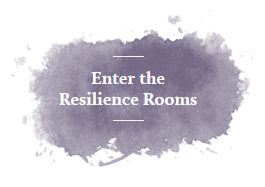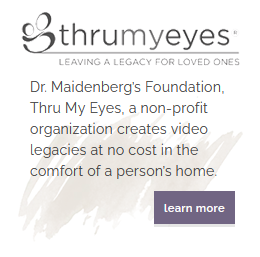The Netflix series 13 Reasons Why received a lot of media attention because of the array of feelings and concerns it raised among parents, practitioners, school administrators, and many others. Their concern is around it’s graphic content, controversial issues, intense and disturbing topics, and mature language. Although intended for high schoolers over the age of seventeen who are more developmentally suited to watch it, because of its TV-MA (mature audiences) rating, in my practice, I’m finding the middle schoolers being much more interested and invested in watching the series.
Even as an adult, I experienced the graphic nature of the content being emotionally evoking and quite disturbing. It’s difficult to predict what the reactions of adolescents and teens may be, and how they are processing all the information they are taking in. This is true, especially among those adolescents and teens who are being bullied or were bullied, experience depression, have active suicidal thoughts and ideation, and/or have histories of abuse. The topics are intense, and includes a comprehensive list of adolescent and teen experiences and concerns. The topics include, suicide, rape, underage alcohol and drug use and abuse, sexting, peer pressure, physical assault, self-injury, socialization challenges, bullying, masturbation, and more.
Most articles I read and parents I have spoken to have the impression that the topics are glamorized, cannot be possibly experienced by high schoolers, especially to that extent, and are especially concerned about the impression it’s making on their children. All these concerns are legitimate. The general feedback I have gotten from adolescents and teens have been quite favorable. Although remarking on how graphic it is, most expressed that it had a general positive impact.
Some feedback I have gotten was, “It teaches us not to give up no matter what”, “Life is always better than death”, “I saw how it’s never ever okay to rape someone and shouldn’t be an excuse for why someone did it or an excuse why someone deserved it”, “It makes me more aware about how others may be going through things that I just don’t know about, I have to look beyond what I see”, “It made me upset about how oblivious the parents were and how the school handled things”, etc.
Obviously not all adolescents and teens will walk away with a positive message and process it positively. Whatever the response to it, it highlights the need for open communication among parents and their children. It’s critical to be able to talk openly about the film, to discuss the underlining topics depicted in the film, and to foster connected relationships so kids will seek help, and parents, school personal, and others will be more in tune with adolescents and teens challenges and their need for help.
What we do know is that these issues are painstakingly real and that there’s a likelihood that most adolescents and teens will experience challenges and adversity during that developmental stage. There’s research to enlighten us on the prevalent issues impacting our children. For example, Major Depression is a common mental disorder affecting adolescents in the United States. In 2015, an estimated 3 million adolescents aged 12 to 17 in the United States had at least one major depressive episode in the past year. This number represented 12.5% of the U.S. population aged 12 to 17.[i] Approximately 20 percent of teens will experience depression before they reach adulthood. Between 10 to 15 percent of teenagers have some symptoms of depression at any one time. Depression increases a teen’s risk for attempting suicide by 12 times.[ii] According to the Center for Disease Control and Prevention (CDC), suicide is the second leading cause of death among 10-34-year-olds.[iii]
Statistics show that females ages 16-19 are 4 times more likely than the general population to be victims of rape, attempted rape, or sexual assault.[iv] Between 1 in 4 and 1 in 3 U.S. students say they have been bullied at school. Most bullying happens in middle school. The most common types are verbal and social bullying. [v] We currently don’t know the extent of cyberbullying which there’s limited data on because of its difficulty to track.
According to the 2015 National Survey on Drug Use and Health (NSDUH), an estimated 623,000 adolescents ages 12–17 (2.5 percent of this age group) had Alcohol Use Disorder. This number includes 298,000 males[vi] (2.3 percent of males in this age group) and 325,000 females[vii] (2.7 percent of females in this age group). An estimated 37,000 adolescents (22,000 males and 15,000 females) received treatment for an alcohol problem in a specialized facility in 2015.[viii] Teens that started drinking before the age of 15 are 5 times more likely to become addicted to alcohol later on, unlike those kids who waited until after they were 21.[ix]
Most people use drugs for the first time when they are teenagers. There were just over 2.8 million new users of illicit drugs in 2013, or about 7,800 new users per day. Over half (54.1 percent) were under 18 years of age. More than half of new illicit drug users begin with marijuana. Next most common are prescription pain relievers, followed by inhalants (which is most common among younger teens). Drug use is highest among people in their late teens and twenties. In 2013, 22.6 percent of 18- to 20-year-olds reported using an illicit drug in the past month.[x] Research shows that teens who consistently learn about the risks of drugs from their parents are up to 50% less likely to use drugs than those who don’t.[xi]
Because of the prevalence of these serious issues and the research which shows the positive benefits of open communication between children and their parents, there is an ever-growing need for parents to talk straightforwardly about these issues with their adolescents and teens. Some parents talk about these issues thoughtfully and expansively, some choose to say little without much content development, with the idea, that at least they brought it up and gave their child something to think about. Some don’t say much at all because they are concerned and fearful that if they speak with their children about challenging and taboo topics, they were going to say or do the “wrong” thing because they are uninformed or misinformed. This may result in them hurting or damaging their children, and they will put negative or anxious thoughts in their child’s mind which didn’t previously exist.
Evidently, an individual child’s openness toward communicating and interacting can facilitate or thwart a parent’s desire and willingness to communicate. Also, impacting on our facilitation is our general comfort level with communicating. This can be based on our impressions of its role in relationships and our judgment regarding its effectiveness. This can be derived from our personal history, experiences, culture, families of origin, etc.
No topic is off limits, despite how uncomfortable it is to talk about. With open communication, it gives the opportunity for parents to know about their children’s knowledge of key topics, their perceptions and perspective on things, and about their thoughts and feelings in general. Most research points to open and engaged communication fostering better decision making in children.[xii] Having open communication and talking comprehensively about all topics is a parental responsibility. A willingness and commitment goes along with that responsibility.
The reality is most challenging and taboo topics are broadcast via social media, are openly discussed among their peers, or are issues raised in school. There are often times that we find out about things after the fact, before we even have the opportunity to make decisions on behalf of our children. The 13 Reasons Why series appeared on Netflix at the end of March. It’s only been the last several weeks that schools wrote letters home about it to parents and the media has been extensively covering it. As hard as we try, sometimes our kids are way ahead of us, especially with all the technological advancements. It’s a new and different world than we grew up in. Thus why we always need to be communicating with the assumption that we don’t know what our children are exposed to.
By choosing to just scratch the surface or not say anything at all, parents are making a choice to ignore topics that children need and want to be informed about. This essentially gives permission for others to take on the role of educator. Negative consequences can result in a lack of education, misinformation, eventual poor decision making, and/or them feeling confused, isolated, and alone.
Your child needs to feel that there is safety in communicating with you at any time about anything. If they don’t bring it up to you, you are not off the hook. It is your responsibility to raise the issue with them—particularly if you sense that the topic is troubling or personally impacting them negatively in any way. The more we hear, the more opportunity we have to offer them resources such as social skills training, academic support, mental health services, and more.
We, as parents, are not expected to know it all. It’s extremely appropriate to seek guidance when you need the help. Some books to help facilitate open communication include: How to Talk to Kids So Kids Will Listen & Listen So Kids Will Talk https://www.amazon.com/How-Talk-Kids-Will-Listen/dp/1451663889/ref=sr_1_30?ie=UTF8&qid=1493394836&sr=8-30&keywords=parent+child+communication and Between Parent and Child https://www.amazon.com/Between-Parent-Child-Revolutionized-Communication/dp/0609809881/ref=sr_1_1?ie=UTF8&qid=1493395045&sr=8-1&keywords=parent+child+communication. The JED Foundation published 13 Reason Why talking points: https://www.save.org/13-reasons-why/.
In my next blog, I’ll give specific recommendations, using Public Service Announcements (PSA) to facilitate communication on various topics. I earmarked over 50 PSA’s on a variety of topics to consider. Unfortunately, the prevalence of these serious issues is real for our adolescents and teens. To ensure the safety and well-being of our children, turning a blind eye is not a viable option. Let’s all work together to make our children informed, conscientious, and responsible. We never want to look back and regret that we didn’t connect sooner.
[i] National Institute of Mental Health (NIMH). https://www.nimh.nih.gov/health/statistics/prevalence/major-depression-among-adolescents.shtml.
[ii] 2012 National Strategy for Suicide Prevention: Goals and Objectives for Action A report of the U.S. Surgeon General and of the National Action Alliance for Suicide Prevention. https://www.surgeongeneral.gov/library/reports/national-strategy-suicide-prevention/full-report.pdf.
I Need A Lighthouse. https://www.ineedalighthouse.org/depression-suicide/teen-depression/
[iii] National Vital Statistics System. National Center for Health Statistics (CDC). National Center for Injury Prevention and Control using WISQARS. https://www.cdc.gov/injury/images/lc-charts/leading_causes_of_death_age_group_2015_1050w740h.gif
[iv] Department of Justice, Office of Justice Programs, Bureau of Justice Statistics, Sex Offenses and Offenders (1997).
[v] National Center for Education Statistics and Bureau of Justice Statistics, School Crime Supplement , 2011.
[vi] Substance Abuse and Mental Health Services Administration (SAMHSA). 2015 National Survey on Drug Use and Health (NSDUH). Table 5.5A—Substance Use Disorder in Past Year among Persons Aged 12 to 17, by Demographic Characteristics: Numbers in Thousands, 2014 and 2015. Available at: https://www.samhsa.gov/data/sites/default/files/NSDUH-DetTabs-2015/NSDUH-DetTabs-2015/NSDUH-DetTabs-2015.htm#tab5-5a. Accessed 1/18/17.
[vii] Substance Abuse and Mental Health Services Administration (SAMHSA). 2015 National Survey on Drug Use and Health (NSDUH). Table 5.5B—Substance Use Disorder in Past Year among Persons Aged 12 to 17, by Demographic Characteristics: Percentages, 2014 and 2015. Available at: https://www.samhsa.gov/data/sites/default/files/NSDUH-DetTabs-2015/NSDUH-DetTabs-2015/NSDUH-DetTabs-2015.htm#tab5-5b. Accessed 1/18/17.
[viii] Substance Abuse and Mental Health Services Administration (SAMHSA). 2015 National Survey on Drug Use and Health (NSDUH). Table 5.36A—Received Substance Use Treatment at a Specialty Facility in the Past Year among Persons Aged 12 to 17, by Demographic Characteristics: Numbers in Thousands, 2014 and 2015. Available at: https://www.samhsa.gov/data/sites/default/files/NSDUH-DetTabs-2015/NSDUH-DetTabs-2015/NSDUH-DetTabs-2015.htm#tab5-36a. Accessed 1/18/17.
[ix] Teendrugrehab.org. http://www.teendrugrehabs.com/facts-and-stats/. Based on statistics reported by the NIMH.
[x] NIDA (2015). Nationwide Trends. Retrieved May 1, 2017, from https://www.drugabuse.gov/publications/drugfacts/nationwide-trends.
[xi] DoSomething.org. (2017). https://www.dosomething.org/us/facts/11-facts-about-teens-and-drug-use
[xii] Epstein, J. (2016). Parent involvement: What research says to administrators. Education and Urban Society, Vol 19, Issue 2, pp. 119 – 136. 10.1177/0013124587019002002
Resnick MD et al. Protecting adolescents from harm: findings from the National Longitudinal Study on Adolescent Health. JAMA 1997;278:823-32.
Karofsky PS et al. Relationship between adolescent parental communication and initiation of first intercourse by adolescents. Journal of Adolescent Health 2000: 28; 41-45.
Steinburg L. We know things: parent-adolescent relationships in retrospect and prospect. J Research Adolesc 2001; 11:1-19.
McNeely C et al. Mothers’ influence on the timing of first sex among 14- and 15-year-olds. Journal of Adolescent Health 2002: 31(3): 256-65.
Blog published Huffington Post.


